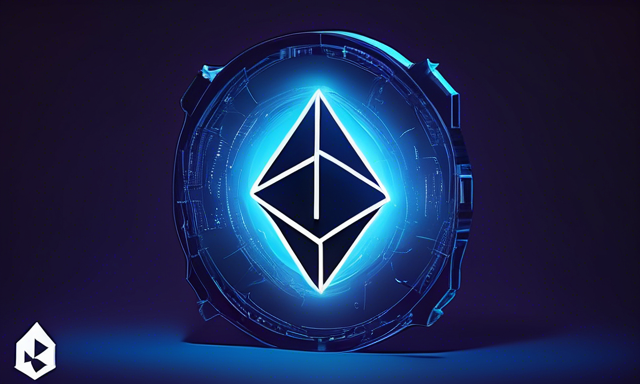Key Highlights of Ethereum Developer Meeting 🛠️
This summary encapsulates essential discussions from the latest meeting of Ethereum developers. By staying updated with these developments, you can gain a better understanding of the technology’s evolution and the adjustments being implemented to enhance Ethereum’s consensus layer.
Overview of the Developer Meeting 📅
On September 5, 2024, a group of Ethereum developers convened virtually for the All Core Developers Consensus (ACDC) call #141. This biweekly event facilitates dialogue and coordination among developers regarding updates to Ethereum’s consensus layer, commonly referred to as the Beacon Chain. The session was led by Alex Stokes, a researcher from the Ethereum Foundation.
Progress on Pectra Devnet 2 🚀
The debugging phase for Pectra Devnet 2 is approaching its conclusion. Terence Tsao, a developer from Prysm, stated that his team managed to fix a non-finality bug discovered on the devnet, encountering no further complications. Parithosh Jayanthi from EF Developer Operations confirmed that the successful resolution of the Prysm bug allows for the deprecation of Pectra Devnet 2.
Jayanthi added that it is not necessary for every client team to be fully prepared for launching Pectra Devnet 3. The devnet can be initiated with select implementations, allowing for additional ones to be integrated later. However, Stokes pointed out that concerns related to EIP 7702 might need addressing within execution layer (EL) clients before they can integrate with the devnet.
Updates on Pectra Specifications 🔍
Several significant updates related to the Pectra implementation on the consensus layer were discussed. First, alterations to EIP 7251 have been proposed to fix an edge case where the correlation penalty for validators with a large amount of staked ETH was inaccurately calculated. This adjustment is now in the final review stage and will soon be integrated into Pectra’s consensus layer specifications.
Furthermore, there are efforts to enhance the efficiency of accessing and storing certain elements within the EL payload inside the Beacon block body, with this change also nearing completion.
Felix Lange, a Geth developer, introduced a strategy to optimize the transfer of validator withdrawal and consolidation requests from the execution layer to the consensus layer, aiming to minimize unnecessary overhead for both EL and CL clients.
Teku developer Mikhail Kalinin discussed the establishment of a queue for deposit requests. This queue’s purpose is to alleviate the workload on consensus layer clients during spikes in deposit activity. It is also designed to thwart frontrunning attacks on withdrawals. Jacek Sieka from Nimbus supported this initiative, indicating it would help reduce errors during deposit caching.
Additionally, developers engaged in discussions about refining Ethereum’s networking layer based on EIP 7549, focusing on developments intended to enhance hash computation and bandwidth for consensus layer clients.
PeerDAS Devnet 2 Insights 🧪
Current implementations of PeerDAS are undergoing local testing by client teams. Both the Lodestar and Nimbus groups are utilizing a new Kurtosis configuration, which allows for the creation of a private testnet. The forthcoming PeerDAS Devnet 2 is expected to incorporate elements of the Pectra upgrade.
Stokes proposed utilizing the stress tests previously employed for the Deneb upgrade in the PeerDAS testnets and advocated for increasing the blob count as detailed in EIP 7742.
Discussions on PeerDAS Proof Computations ⚙️
During the meeting, developers analyzed the handling of proof computations for validators operating on systems with limited resources. Dankrad Feist, an EF researcher, suggested accelerating the investigation into distributed block building, allowing home stakers to sidestep the complexities of proof computation by depending on more robust nodes.
Stokes urged the adoption of a solution that prepares blobs at the consensus layer, intending to lessen computational demands. He invited Feist to establish a group or Discord channel to facilitate this work independently from the ongoing conference call.
Research and Future Directions 🔬
Nimbus developer “Dustin” recommended the removal of references to SSZ unions within consensus layer specifications, as they are not in use among the CL clients. The goal is to align the consensus specifications better with existing client infrastructures. Prior to completing this removal, consultation with the Portal team, which utilizes SSZ unions in some capacity, will occur.
Finally, developers reaffirmed the significance of the Portal network in the Ethereum ecosystem, highlighting its substantial financial backing and support from the Ethereum Foundation.
Hot Take 🔥
Ethereum’s continued evolution shows promise through the substantial efforts of its developer community. The successful fixes and proposed improvements outlined in this ACDC call reveal the ongoing commitment to enhancing functionality and addressing technical challenges within the ecosystem. Keeping abreast of these developments is crucial for anyone interested in the future trajectory of Ethereum.





 By
By
 By
By
 By
By
 By
By
 By
By